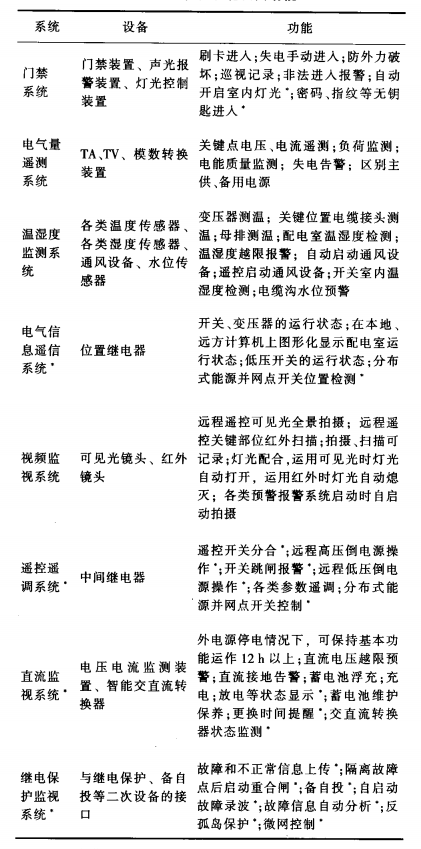二叉树的链式结构实现
- 一、链式二叉树结点定义
- 二、二叉树的遍历
- 2.1 前序遍历:根左右
- 2.2 中序遍历:左根右
- 2.3 后序遍历:左右根
- 2.4 层序遍历
- 三、二叉树中结点个数
- 四、二叉树中叶子结点个数
- 五、二叉树中第k层结点数
- 六、求树的深度-高度
- 七、二叉树按值查找
- 八、二叉树的销毁
- 九、判断二叉树是否为完全二叉树
- 源码
- 总结
一、链式二叉树结点定义
typedef char BTDataType;
typedef struct BinaryTreeNode
{struct BinaryTreeNode* left;struct BinaryTreeNode* right;BTDataType data;
}BTNode;
二、二叉树的遍历
前序 PreOrder:
中序 InOrder(MidOrder):
后续 PostOrder:
首先需要手动构建一颗二叉树:
BTNode* CreatBinaryTree()
{/*AB CD E F*/BTNode* nodeA = CreateNode('A');BTNode* nodeB = CreateNode('B');BTNode* nodeC = CreateNode('C');BTNode* nodeD = CreateNode('D');BTNode* nodeE = CreateNode('E');BTNode* nodeF = CreateNode('F');nodeA->left = nodeB;nodeA->right = nodeC;nodeB->left = nodeD;nodeC->left = nodeE;nodeC->right = nodeF;return nodeA;
}
2.1 前序遍历:根左右
// 二叉树前序遍历
void PreOrder(BTNode* root)
{if (root == NULL){//printf("NULL ");return;}printf("%c ", root->data);PreOrder(root->left);PreOrder(root->right);
}
2.2 中序遍历:左根右
void InOrder(BTNode* root)
{if (root == NULL){//printf("NULL ");return;}InOrder(root->left);printf("%c ", root->data);InOrder(root->right);
}
2.3 后序遍历:左右根
void PostOrder(BTNode* root)
{if (root == NULL){//printf("NULL ");return;}PostOrder(root->left);PostOrder(root->right);printf("%c ", root->data);
}
2.4 层序遍历
借助于队列实现。推荐使用C++的Queue。
#include "Queue.h"
void LevelOrder(BTNode* root)
{assert(root);Queue q;QueueInit(&q);QueuePush(&q, root);while (!QueueEmpty(&q)){BTNode* front = QueueFront(&q);QueuePop(&q);printf("%c ", front->data);if(root->left)QueuePush(&q, root->left);if(root->right)QueuePush(&q, root->right);}QueueDestroy(&q);
}
三、二叉树中结点个数
使用遍历计数的方法,可以有以下两个代码:
int BinaryTreeSize(BTNode* root)
{if (root == NULL){return;}// 遍历计数思想:多次调用存在问题static int count = 0;++count;BinaryTreeSize(root->left);BinaryTreeSize(root->right);return count;
}void BinaryTreeSize(BTNode* root, int* pn)
{if (root == NULL){return;}++(*pn);BinaryTreeSize(root->left, pn);BinaryTreeSize(root->right, pn);
}
上面代码存在的问题是多次调用会出错。
使用递归方法:
int BinaryTreeSize(BTNode* root)
{/*if (root == NULL){return 0;}return 1 + BinaryTreeSize(root->left) + BinaryTreeSize(root->right);*/return root == NULL ? 0 : BinaryTreeSize(root->left) + BinaryTreeSize(root->right) + 1;
}
四、二叉树中叶子结点个数
按照递归写法,首先上来需要判断结点为空的情况:
if (root == NULL)
{return 0;
}
转换为递归求解方法:分别求左右子树的叶子结点的和
// 二叉树叶子节点个数
int BinaryTreeLeafSize(BTNode* root)
{if (root == NULL){return 0;}return BinaryTreeLeafSize(root->left) + BinaryTreeLeafSize(root->right);
}
然后找到叶子结点并计数:
// 二叉树叶子节点个数
int BinaryTreeLeafSize(BTNode* root)
{if (root == NULL){return 0;}// 如果是叶子结点if (root->left == NULL && root->right == NULL){return 1;}return BinaryTreeLeafSize(root->left) + BinaryTreeLeafSize(root->right);
}
五、二叉树中第k层结点数
按照递归写法,首先上来需要判断结点为空的情况:
if (root == NULL)
{return 0;
}
转换为递归求解方法:求第root的第k层的结点数,为root左子树的k-1层结点数加上root右子树的k-1层结点数。例如:求A的第四层,可以转换为求A的左子树的第三层加上A的右子树的第三层。
// 二叉树第k层节点个数
int BinaryTreeLevelKSize(BTNode* root, int k)
{if (root == NULL){return 0;}return BinaryTreeLevelKSize(root->left, k - 1) + BinaryTreeLevelKSize(root->right, k - 1);
}
给出递归结束条件,如果k等于1,则返回1
// 二叉树第k层节点个数
int BinaryTreeLevelKSize(BTNode* root, int k)
{assert(k >= 1);if (root == NULL){return 0;}// 找到第k层结点if (k == 1){return 1;}return BinaryTreeLevelKSize(root->left, k - 1) + BinaryTreeLevelKSize(root->right, k - 1);
}
六、求树的深度-高度
首先给出root为空的情况,然后转换为用递归求解,因为根节点深度为1,所以求其左右子树高度的最大值,再加一就是树高:
// 二叉树的深度/高度
int BinaryTreeDepth(BTNode* root)
{if (root == NULL){return 0;}int leftDepth = BinaryTreeDepth(root->left);int rightDepth = BinaryTreeDepth(root->right);return leftDepth > rightDepth ? leftDepth + 1 : rightDepth + 1;
}
七、二叉树按值查找
首先给出root为空的处理:
if (root == NULL)
{return NULL;
}
如果该结点就是查找的值,返回该节点:
if (root->data == x)
{return root;
}
如果该结点不是查找的值,则从左子树查找,如果左子树结点是,则返回左子树。右子树类似。
if (BinaryTreeFind(root->left, x))
{return root->left;
}if (BinaryTreeFind(root->right, x))
{return root->right;
}
都找不到返回NULL:
// 二叉树查找值为x的节点
BTNode* BinaryTreeFind(BTNode* root, BTDataType x)
{if (root == NULL){return NULL;}if (root->data == x){return root;}if (BinaryTreeFind(root->left, x)){return root->left;}if (BinaryTreeFind(root->right, x)){return root->right;}return NULL;
}
好像没什么问题,但是当我们测试时发现有错误,自己动手调试就知道哪里有错误了。
修改左右子树查找的代码:
BTNode* leftRet = BinaryTreeFind(root->left, x);
if (leftRet)
{return leftRet;
}BTNode* rightRet = BinaryTreeFind(root->right, x);
if (rightRet)
{return rightRet;
}
最终代码:
// 二叉树查找值为x的节点
BTNode* BinaryTreeFind(BTNode* root, BTDataType x)
{if (root == NULL){return NULL;}if (root->data == x){return root;}BTNode* leftRet = BinaryTreeFind(root->left, x);if (leftRet){return leftRet;}BTNode* rightRet = BinaryTreeFind(root->right, x);if (rightRet){return rightRet;}return NULL;
}
八、二叉树的销毁
后序遍历销毁:左右根
void BinaryTreeDestroy(BTNode* root)
{if (root == NULL){return;}BinaryTreeDestroy(root->left);BinaryTreeDestroy(root->right);free(root);
}
九、判断二叉树是否为完全二叉树
判断二叉树是否是完全二叉树,我们可以考虑层序遍历,层序遍历过程中,没有间断便是完全二叉树。
间断表示什么意思?如果该二叉树不是完全二叉树,在遍历的过程中,我们还将左右为空的结点也加入到队列中,则会出现,队列中第一个空节点的后面还会有非空结点。如果该二叉树是一棵完全二叉树,则队列中第一个空节点后边全是空节点。
因此在层序遍历过程中,遇到第一个空节点便结束,然后将队列中的剩余节点元素依次弹出,遇到非空节点就不是完全二叉树。
bool BinaryTreeComplete(BTNode* root)
{Queue q;QueueInit(&q);if (root)QueuePush(&q, root);while (!QueueEmpty(&q)){BTNode* front = QueueFront(&q);QueuePop(&q);// 遇到第一个空结点跳出if(front == NULL)break;QueuePush(&q, root->left);QueuePush(&q, root->right);}// 检查队列中还有没有非空节点,有非空节点就不是完全二叉树while (!QueueEmpty(&q)){BTNode* front = QueueFront(&q);QueuePop(&q);if (front){QueueDestroy(&q);return false;}}QueueDestroy(&q);return true;
}
源码
Gitee-BinaryTree
总结
1.第一步需要上来就对空树情况进行处理。
2.递归的方法进行问题转换:求树的问题,转换为求左树和右树的问题,进行递归处理。
3.第二步空树情况处理完之后,需要给出递归结束条件。或满足当前节点判断的条件。
4.第三步需要给出递归表达式。




